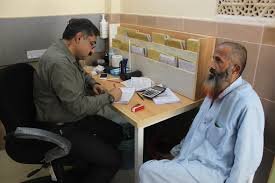“The racial composition of any professional group in society is a product of racist or antiracist policies or norms, not happenstance.”
Percentage of Underrepresented Minorities (URMs) in the General U.S. Population vs Health Professions. From Sex, Race, and Ethnic Diversity of US Health Occupations (2011-2015).
Healthcare is already way behind being representative of the US population. 13% of physicians are under-represented minorities (URMs)* despite URMs making up 35% of the general population. Simultaneously, the country is rapidly becoming more diverse. The Census Bureau predicts the white population will drop from 62% to <44% by 2060. So not only does medicine have to catch up but we have even more work to adapt to the changing demographics.
*This data excludes Asians as URMs, but there are underrepresented backgrounds among people of Asian descent.
Why Is It So Important to Have More Racial & Ethnic Diversity in Medicine?
The elephant in the room…
The ACGME requires that programs “[have and implement], policies and procedures related to recruitment and retention of minorities underrepresented in medicine.”
Minority physicians are more likely to:
Care for patients of their own race or ethnic group;
Practice in areas that are underserved or have healthcare shortages;
Care for poor patients, patients with Medicaid, or no health insurance;
Care for sicker patients; and
Choose primary care.
Keith, 1985; Moy and Bartman, 1995; Komaromy et al, 1996; Cantor et al, 1996; Xu, 1997; Brotherton, 2000; Murray-Garcia, 2001; Rabinowitz, 2000; Cooper et al, 2004; Saha, 2008; Walker, 2012; Poma, 2017; Xierali, 2018.
Despite being underrepresented in medicine, non-white physicians care for:
53% of minority patients
70.4% of non-English-speaking patients
Race & language concordance improves patient:
Trust
Satisfaction
Comprehension
Intention to adhere
Chronic disease management
Follow-up
Cooper et al, 2004; Street, 2008; Walker, 2012; Marrast, 2014; Saha, 2014; Parker, 2017; Poma, 2017.
Diversity improves learning
White students within the highest quintile for student body racial and ethnic diversity (measured by the proportion of underrepresented minority (URM) students) are:
More likely to rate themselves as highly prepared to care for minority populations - this association was strongest in schools in which students perceived a positive climate for interracial interaction.
More likely to have strong attitudes endorsing equitable access to care.
Diverse faculty improves success of underrepresented learners.
African-American students who have African-American faculty have better academic performance and higher graduation rates.
This article, “Harvard Medical School students decry lack of diversity,” touches on the lack of people of color in academic institutions.
Learn more about how the “Minority Tax” may be a significant contributor to the lack proportion of Black, Latino, and Native American faculty in U.S. academic medical centers in this 2015 article.
Dr. Tonya Fancher is the Associate Dean of Workforce innovation and Community Engagement, Interim Associate Dean of Student and Resident Diversity and the Director of the Center for a Diverse Healthcare Workforce. A primary care trained general internist, Dr. Fancher spent four years in the US Air Force and completed her MPH and Outcomes Research Fellowship at UC Davis in 2004. She founded and currently leads UC Davis pathways for learners committed to primary care and underserved populations. She is the principal investigator on an American Medical Association grant and created the only 3-year accelerated medical school pathway on the west coast. Eighty percent of students enrolled in the pathways she leads are from communities underrepresented in medicine. She has received numerous teaching awards and national recognition for her community engagement activities and contributions to diversity.
Resources
Vick AD, Baugh A, Lambert J, et al. Levers of change: a review of contemporary interventions to enhance diversity in medical schools in the USA. Adv Med Educ Pract. 2018; 9: 53‐61.
Xierali IM, Nivet MA. The Racial and Ethnic Composition and Distribution of Primary Care Physicians. J Health Care Poor Underserved. 2018; 29 (1): 556‐570.





